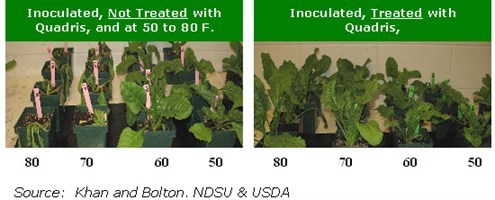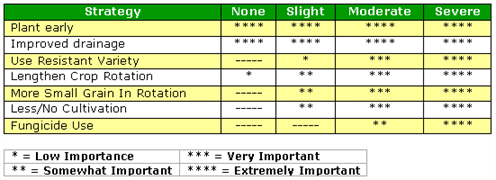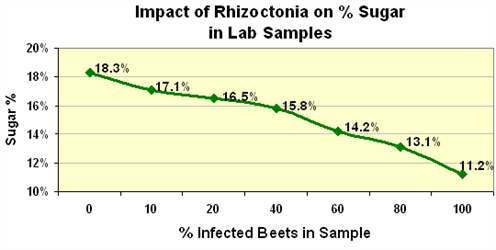521 - Rhizoctonia Threat Increasing
Root diseases pose a serious threat to greater acreages in the RRV each year. Rhizoctonia has always been present in nearly every field. In spite of widespread incidence of Rhizoctonia its severity and threat to crop profitability was low until recent years. In spite of this threat, growers have many tools available to manage Rhizoctonia quite effectively.
Q.Why do we have an increased threat from Rhizoctonia?
A. Factors increasing Rhizoctonia include:
- More susceptible crops in rotation including corn, soybeans, and edible beans
- Many weeds are good hosts for Rhizoctonia including pigweed and lambsquarters
- Few good resistant varieties were available until very recently
- Increasing presence of much more virulent strains of Rhizoctonia
- Very limited use of chemical control options
- Favorable environmental conditions
- Less wheat and barley in rotation
Q. Are effective resistant varieties available?
A. Yes, most seed companies have at least one variety with good resistance. See 2008 coded trial data and visit with your agriculturist about variety selection.
Q. When does infection take place in the field?
A. Infection begins when soil temperatures approach 70° F. See pictures below.

Integrated Rhizoctonia BMP's
Growers have many options for management and control of Rhizoctonia at their disposal. The strategies you employ depend on the incidence and severity of Rhizoctonia in of your fields.
Disease Severity Rating

Fungicide Timing and Placement
- Apply at or near time of infection
- In fields with moderate Rhizoctonia disease pressure
- 8-10 leaf stage (before cultivation)
- In fields with high Rhizoctonia disease pressure
- 4-6 leaf stage + 8-10 leaf state
- Too early or too late = inadequate protection
- Band applications more effective than broadcast
- Effective when infection starts at crown - but not when infection starts in soil
Impact of Rhizoctonia on Beet Quality
Rhizoctonia infected beets in quality lab samples can have a drastic effect on percent sugar. Rhizoctonia infected roots are also detrimental to storage.

